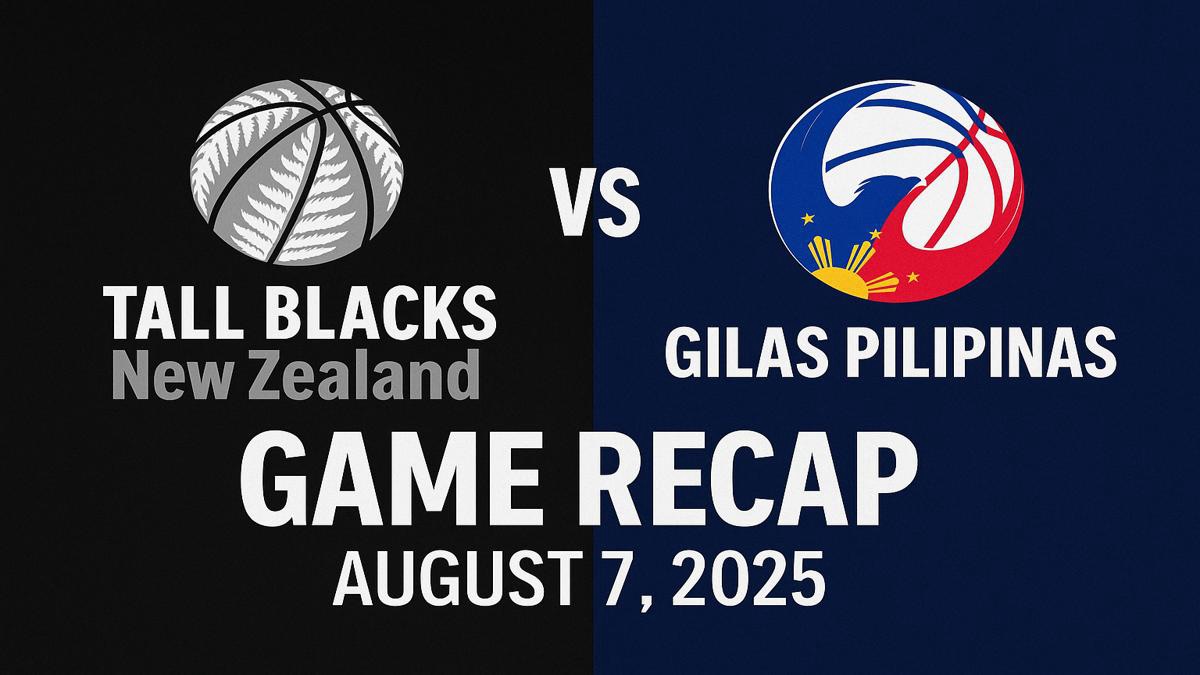
UThe FIBA Asia Cup 2025 group-stage showdown in Jeddah did not tilt the way the home-leaning crowd hoped. At the King Abdullah Sports City on August 7, 2025, New Zealand punished early defensive gaps and built a cushion the Philippines never fully erased, prevailing 94–86 behind a composed, high‑efficiency offense and timely shot‑making. Official FIBA stats list the quarter split at 23–18, 32–23, 19–27, 20–18 to New Zealand, a pattern that tells the story: the Kiwis seized control before halftime and withstood Gilas’ third‑quarter surge.
Gilas made their stand after intermission. With the defense finally stringing together stops, the Philippines won the third quarter 27–19, trimming the deficit and injecting life into the contest. But New Zealand’s responses were steady: they matched runs with extra passes, slipped cutters behind hard closeouts, and answered with a 50% clip from three—the single most back‑breaking number on the night. In contrast, the Philippines shot 32.1% from long range; the math problem never went away.
Key turning points
The hinge came late in the second quarter, when New Zealand layered multiple scores off drive‑and‑kick actions to blow the game open, and again midway through the fourth, when back‑to‑back Kiwi buckets halted Gilas’ last big push. The lead peaked at 18 for New Zealand, who ultimately led for 36:15 of game time—evidence of their control even as the Philippines threatened.
Top performers
Jordan Ngatai was the headline scorer for New Zealand, finishing with a game‑high 22 points and earning Player of the Game honors on FIBA’s channels. His perimeter shot‑making and opportunistic cuts consistently punished over‑rotations. Justin Brownlee carried the load for the Philippines and posted the top efficiency rating (35) on the floor; his blend of rim attacks, mid‑post creation, and glass work kept Gilas within striking distance.
Tactical snapshot: how New Zealand won it
Offense: New Zealand leaned into five‑out looks and quick‑hit actions—pistol drags, slot drives, and early flare screens—to distort matchups. The ball didn’t stick. Their 49% overall field‑goal rate and that ruthless 50% from three came from paint touches first, then precision kick‑outs. When the Philippines amped pressure, the Kiwis flowed straight into secondary actions, refusing to take the first contested shot.
Defense: They mixed coverages on Brownlee—showing a second body on catches, tagging early on rolls, then recovering out to shooters. Rotations were crisp enough to hold the Philippines to 32.1% from deep, and they closed possessions with physical box‑outs. When Gilas did pierce the first line, New Zealand walled up without fouling, conceding twos more often than threes (the Philippines still finished at 55% on twos).
Gilas’ effort—and what almost flipped it
The Philippines’ most convincing stretch came in the third quarter. They upped the tempo, hunted early seals, and let Brownlee operate as a pressure‑release valve in the mid‑post, creating drive‑and‑kick rhythm. Lineups with additional ball‑handlers helped target closeout angles, and the energy translated to stops. But the hill built in the first half proved too steep; New Zealand’s discipline late—milking clock, generating a quality look, getting a stop—kept the gap intact.
Atmosphere & venue
Official attendance was 1,005, but the noise played bigger. Every Philippine run hit like a wave, cresting during that standout third period, only for New Zealand’s shot‑making to quiet the building again. The neutral‑site stage in Jeddah’s King Abdullah Sports City delivered a tidy, TV‑friendly game flow and clean sightlines that shooters loved—especially the Kiwis.
Numbers that decided it
- Three‑point gap: PHI 32.1% vs NZL 50%
- Overall FG%: PHI 46% vs NZL 49%
- Free throws: PHI 75% vs NZL 81%
- Lead/Control: NZL led for 36:15, largest lead 18
All figures per FIBA’s official game page.
Implications for the Asia Cup 2025
In Group D, this result immediately applies pressure on the Philippines, who must bank wins in the remaining fixtures to avoid an unfavorable knockout path. For New Zealand, it’s a statement start—banking a win over a familiar rival and reinforcing their medal ambitions with a clean, sustainable formula: spacing, pace, and shot selection.












